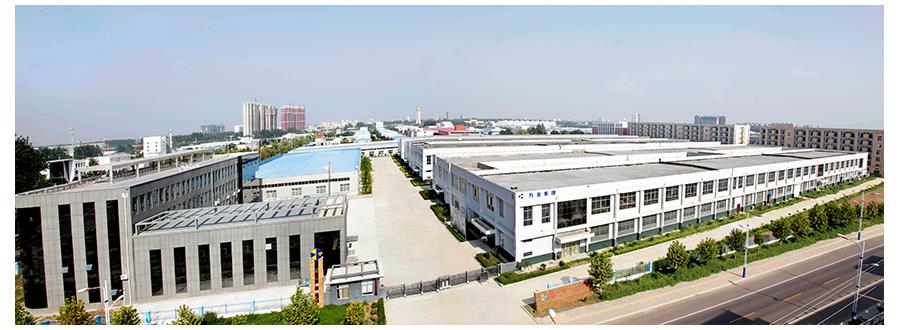Brief Introduction
The role of drilling in oilfield development is very important. It is estimated that drilling investment accounts for 35% to 40% of investment in certain fields. At present, the oil resources of various countries in the world are depleting. This requires drilling companies to carry out oil development more economically and efficiently. As the most important tool in drilling operations, the bit performance directly affects the quality, cost and efficiency of drilling operations. In the 1980s, people developed a polycrystalline diamond compact bit (PDC drill bit) using artificial polycrystalline diamond as a cutting tooth, which can significantly improve the drilling efficiency and have a long service life, and has been widely used. application. The PDC bit, the downhole motor, the drilling-while-drilling test, and the application of the computer in drilling are also called the four major drilling techniques in the 1980s. The introduction of the PDC bit was an outstanding achievement of the petroleum industry in the 1980s. It used to be an oil drilling engineering belt. A new technological revolution has come. China began to introduce PDC bits since the early 1980s. After the 1990s, the major oil fields began to use PDC bits and achieved good results. However, the quality of the composite sheet is still low, and the research on water conservancy design of the drill bit is scarce in China, so it needs to be researched and developed vigorously.
China began to introduce PDC bits since the early 1980s. After the 1990s, major oil fields began to use PDC bits and achieved good results. Although the PDC bit has many advantages and is widely used, compared with other bits, the PDC bit's hydraulic problems are more prominent: On the one hand, the PDC bit breaks the rock in a shear way, and the drilling speed is fast. A large amount of cuttings needs to be cleared in time; On the one hand, rapid cooling is required for temperature-sensitive PDC cutters. If the clear rock and cooling effect are insufficient, it will not only cause bit mud packs and repeated cutting, resulting in a sharp drop in the penetration rate, but also will cause rapid wear and failure of the PDC cutting teeth in the well bottom high temperature environment, which will seriously affect the use of PDC bit. life. Therefore, the research and improvement of the bottom hole hydraulic effect of PDC bit has always been one of the most concerned issues for researchers and users of PDC bit. PDC bit cutting teeth have two kinds of composite structure and tooth column structure. The composite chip cutting tooth is formed by welding the composite piece directly in the reserved groove on the bit body, and it is mainly used for the carcass drill bit; the tooth post type cutting tooth is to weld the composite piece on the tungsten carbide tooth post and Formed, when installed, the studs are inlaid or welded in the tooth space on the drill body. It is mainly used for steel body drill bits and also for carcass drill bits. Foreign countries have always attached great importance to the research of new cutting teeth. Using the different shapes of cutting teeth, a variety of new products have been developed. Typical examples are double-edged cutting teeth (TEC), pre-chamfer edge-enhancing teeth (CES), and overlays. Protective layer cutting teeth, composite structure teeth (MC), wedge teeth (SC), etc. Under certain specific conditions, the cutting performance of these special morphological structures has been significantly improved. The progress is very rapid and can be summarized as follows.
1. PDC bit design progress At present, on the basis of the existing PDC bit, under certain specific applications, we design some new types of PDC bit.
(1) Thermally stable polycrystalline diamond drill The so-called thermally stable polycrystalline diamond refers to polycrystalline diamond that maintains its original physical and mechanical properties at high temperatures (1200°C). Due to the use of a silicon alloy binder or no binder, the critical graphitization temperature of diamond is greatly increased, and the thermal properties of silicon carbide and diamond are more apt to increase the performance of polycrystalline diamond.
(2) PDC + Diamond Pregnancy Block Mixing Drill Bits The main cutting teeth of this bit are PDCs, and diamond studs are inserted behind the PDC cutting teeth to support the PDC cutting teeth and enhance the breaking strength of the PDC. This drill bit cuts the formation from the PDC as it drills into the soft formation, and when drilling in a hard or abrasive formation, the diamond impregnated block comes into contact with the formation and shoulders the crushed rock as the PDC wears. This drill has a wide range of applications and at the same time has a high penetration rate as a PDC bit and a lifetime similar to a natural diamond drill.
(3) PDC + TSP mixed tooth bit This type of drill consists of PDC teeth and TSP teeth with the same shape and size, the ratio is generally 40 (PDC): 60 (TSP), can be drilled in the hard ~ hard and hard rock sandwich Formation. Under the same conditions, the drill performs better than conventional PDC bits and roller cone bits.
(4) Large cutting teeth PDC bits Usually, this drill has only 8 to 9 large PDC cutters. Due to the large cutting teeth, the total cutting area is 35% larger than that of conventional drills, and cuttings are 3 times more cuttings. about. The advantage is that the cutting teeth do not fall off easily and are resistant to erosion. The drill has achieved significant economic benefits in applications in the United States, the North Sea, and Southeast Asia.
(5) Diamond-enhanced pre-insert bit The cutter's cutting teeth are 3 layers of polycrystalline diamond composite layer about 0.76mm thick bonded on cemented carbide pillar teeth, so that the cutting teeth have high wear resistance of diamond at the same time. The high impact resistance of both sex and hard alloys enables effective penetration into hard and abrasive formations with grinding and impact. In the development of the new PDC bit, after the materials and structures have reached a certain level, it is particularly important to use fluid mechanics to analyze the hydraulic field at the head of the PDC bit, and even become the decisive factor in improving the drilling speed and service life of the PDC bit. factor.
The main research purposes are:
1 Prevent bit mud packs to increase ROP and prolong service life;
2 to make the flow steady, improve the ability of the fluid clear rock and cooling cutter;
3 Reduce the impact of the vortex and jet on the cutting teeth to prevent tooth breakage. The current research method is to analyze the similarities and differences of the flow field under different bit shape and hydraulic parameters through experiments and numerical calculations, in order to find the direction to improve the hydraulic parameters of drill bit shape adjustment.
Related Products















